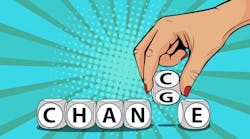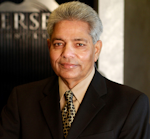This information may be a bit contradictory to what dental management companies have been preaching for years. I’ve been a prosthodontist for 45 years in the Chicagoland area. I was also in academics for 21 years as an associate professor at Northwestern University. Besides my teaching, research, and practice, I did consulting work for 10 years for dental practices and presented seminars on dental practice management topics.
Through the years, I attended multiple courses from different management companies featuring speakers of different calibers and name recognition. In every course, including the seminars I presented, a strong emphasis was placed on a highly organized system of patient follow-up.
Our follow-up system in dental practices can be divided into separate groups: new patients and existing patients. New patients can be divided into three groups: patients who make an appointment and never show up or cancel minutes before the appointment; patients who show up but make no commitment to their treatment; and patients who come to the office, accept the treatment, and schedule.
You might also be interested in: The economic impact of no-shows on dental practices
Patients who don’t show up or cancel
Our protocol used to be to send three reminders before someone’s appointment—one day before the appointment, the morning of the appointment, and 10 minutes before the appointment.
After they didn’t show up, we’d call them five minutes after the appointment to see if they were on their way, half an hour later to check on their welfare, and at the end of the day.
At the end of the week, one team member would make a call list of all the no-show or canceled patients that week. From the call list we tried to contact the patients three times in the next two weeks.
When we evaluated the outcome of these phone calls and the time invested in these follow-ups, it was eye-opening. We realized about 95% of our phone calls went unanswered. Five percent of the patients who did answer the phone had no interest in rescheduling their appointment and many of them gave similar excuses.
If any of the patients did reschedule, most of them didn't show again. Our valuable time was wasted. It was a very frustrating and exhausting task for our team members, and this brought our group’s high energy and morale down.
There are two main reasons for no-show appointments for new patients. For the practices that do direct external marketing, the no‐show rate will be very high. We experienced that in our practice as we participated in external direct marketing through emails, social media, print media, patient educational seminars, and a customized office magazine.
Unfortunately, the dental industry has also created a huge problem for itself through the years by offering free examinations, x-rays, consultations, and other perks. Many patients make appointments in several offices, especially the patients who have no shortage of time, because this costs them nothing.
Patients who show up but don’t commit to treatment
Often patients would come in but didn’t commit to treatment, even if they qualified for financing. They’d tell us they’d go home and talk to their partner or children, look at their financing, and check their schedule.
We came to realize that a majority of these were simply excuses. Of course, there’s always an exception to every situation. But many patients have had these dental issues for several years and had ample time to decide what to do before their appointment, so why did they not take care of these concerns before making an appointment?
I can understand if their treatment cost was not what they were expecting or they did not agree with or understood the treatment. I’m excluding these patients from our conclusions. We explained the treatment to them in a simple straightforward way. I wrote an article called "Readjusting patient priorities" that explains how to use common and communicative language to educate patients.1
We used to call the noncommittal groups at least four times during the next several weeks. We’d also send them a follow-up letter one week later. In the letter we covered four areas: their concerns and problems; treatment as it was presented and explained; finances with payment plan options, including insurance payments; and the consequences of delaying or postponing the recommended treatment.
We estimated our team members spent at least two hours per day of their valuable time on these follow-ups with minimal to no productive results. When we realized this time was wasted on the prospective patients who had no interest in their own well-being and treatment, we no longer wasted time on them and directed our energies toward productive actions.
We’ve stopped all the follow-ups except for one computer-generated reminder of their appointment one day before. We make no more phone calls and send no more follow-up letters. Patients can reach out to us if they need our services. They need to take some responsibility for their health by at least showing up for their appointments.
A paradigm shift
Our old paradigms stop us from making changes in our lives to achieve productive results. We fear loss. Our office eliminated both these factors from our system and thought processes. All my team members are now incredibly happy and thankful we eliminated this nonproductive work. We started the no follow-up protocol almost two years ago and to our surprise, it’s had no negative impact on the practice and our practice has grown to new heights.
Patients who show up and accept treatment
We have redirected our time toward existing patients who accept treatment. We call them in the evenings following a long procedure to see if they have any questions or concerns, and to thank them for coming in. We also follow up with hygiene patients who had anesthesia or perio therapy to see how they’re doing.
These changes have brought great results in establishing patients’ loyalty as well as increased our in-house referrals. Now, our new protocol is that if a new patient does not show up, we do not make any follow-up calls. If they cancel and don’t call to reschedule, we do no follow-up call. They’ll call when they need us.
When a patient leaves, offers us their excuses, and asks if we will call them in a few days, our answer is no, and we tell them to call us when they’re ready.
In summary, we need to adjust and modify our approach as times change. We need to value our time and use it toward productive tasks that bring results. Doing nonstop follow-up can annoy patients. This was a big paradigm shift for us, but we’re glad we did it.
You must evaluate your practice and adopt the actions that are productive and delete the ones that are a waste of time. Do not be afraid to change or modify old paradigms if you’re looking to improve your results.
Editor's note: This article appeared in the September 2023 print edition of Dental Economics magazine. Dentists in North America are eligible for a complimentary print subscription. Sign up here.
Reference
- Agarwal AK. Readjusting patient priorities. Dental Economics. September 1, 2008. https://www.dentaleconomics.com/practice/article/16387164/readjusting-patient-priorities







